Ampilatwatja Art Community Colour Palettes
You find the artists of Ampilatwatja (pronounced 'um-bludder-
The Alyawarr people have acquired a deep knowledge of the plants and animals that grow on their traditional lands. Many of the artists paint images of the plants they use in their bush medicine practice. This is a community who have chosen to reveal little of their secret traditional stories in their paintings. They do not use the symbols shared by Central Desert communities as a way of telling Tjukurrpa or Dreaming stories. They prefer to paint the landscapes where those stories took place and so the connection between story and location remains integral to the artists' feeling for that Country.

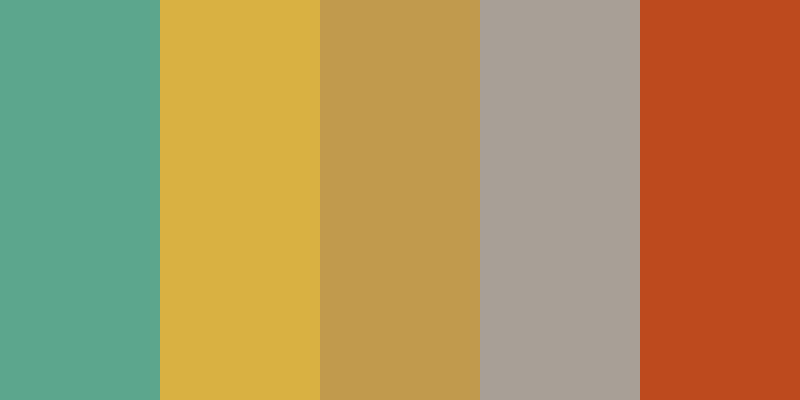
Michelle Pula Holmes | My Country
This landscape painting by Michelle Pula Holmes reminds me of a landscape that’s seen from a moving viewpoint, as though you’re rushing past the country. You see these bands of colour in the soil and the vegetation, and you get all the different types of bush plants growing across the landscape. The grasses feel like they’re just a little bit out of perspective or out of focus. The artist is drawing on close observations of the colour of the soil, all the different types of plants that grow in each of those bands of soil, an effect which you often find in the desert landscape. There are contrasting microclimates and microecology located right next to each other, which the artist has carefully observed.
(Jap 014610)
View Michelle Pula Holmes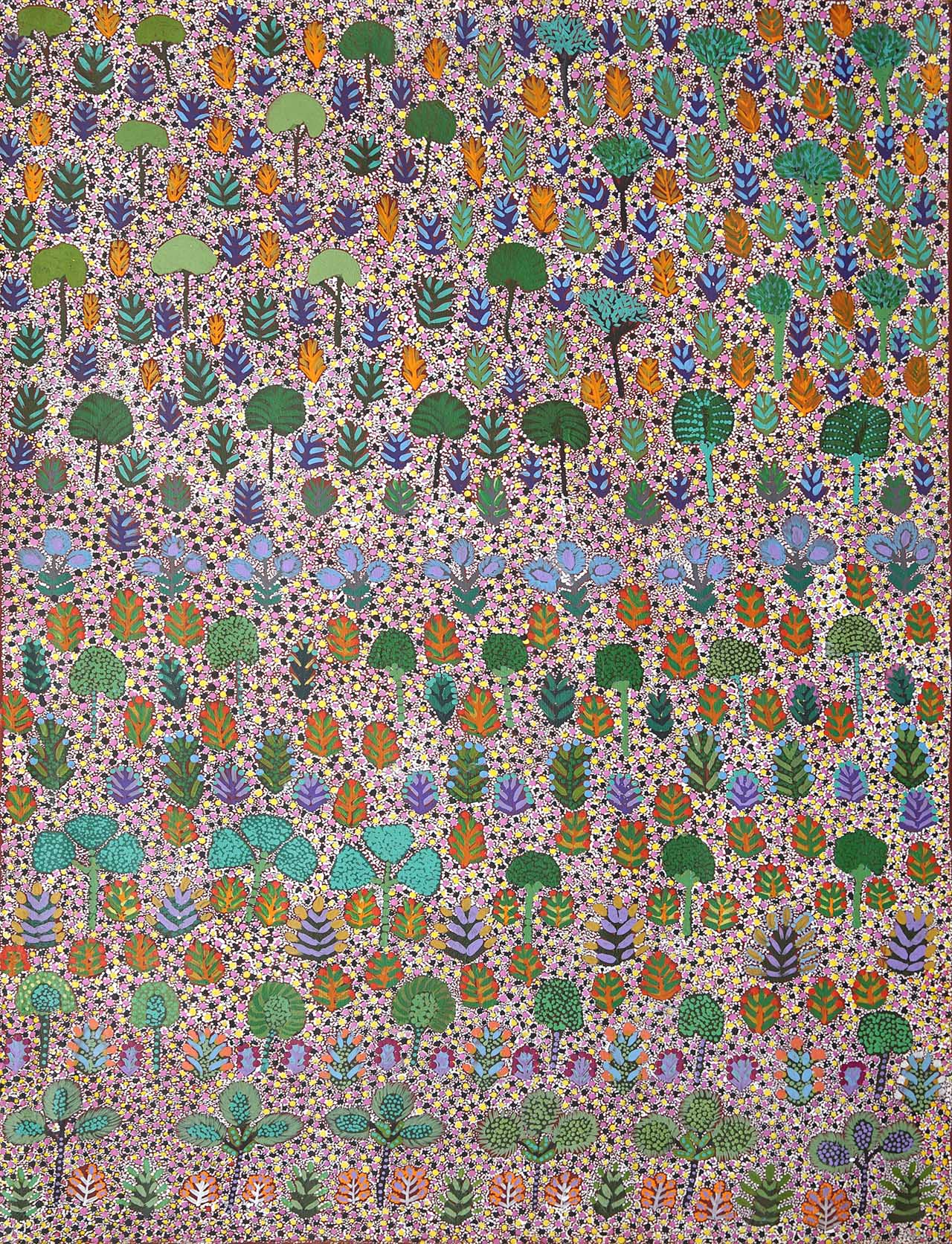
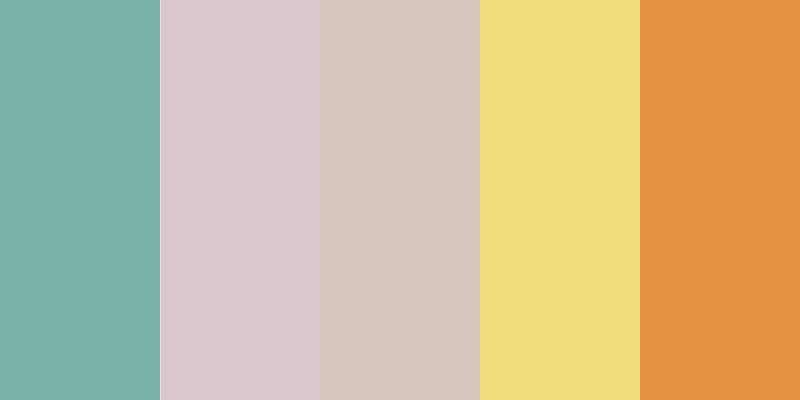
Rosie Kemarre Morton | My Fathers Country and Bush Medicine
I love this painting by Rosie Kemarre Morton. It’s like an animal skin. It has different layers of the vegetation across the landscape. The background creates a speckled effect, and then you’ve got the quite diverse plants, trees and bushes that represent the bush medicine plants and the vegetation in the country. It’s almost like a speckled version of the country with all these speckled plants. It’s created by the eye of an artist who can specifically pick out each of the plants that are growing in the landscape. I might look across and see a whole plain full of bushes and plants. The artist sees all this diversity in each of the individual species.
(Jap 014609)
View Rosie Kemarre Morton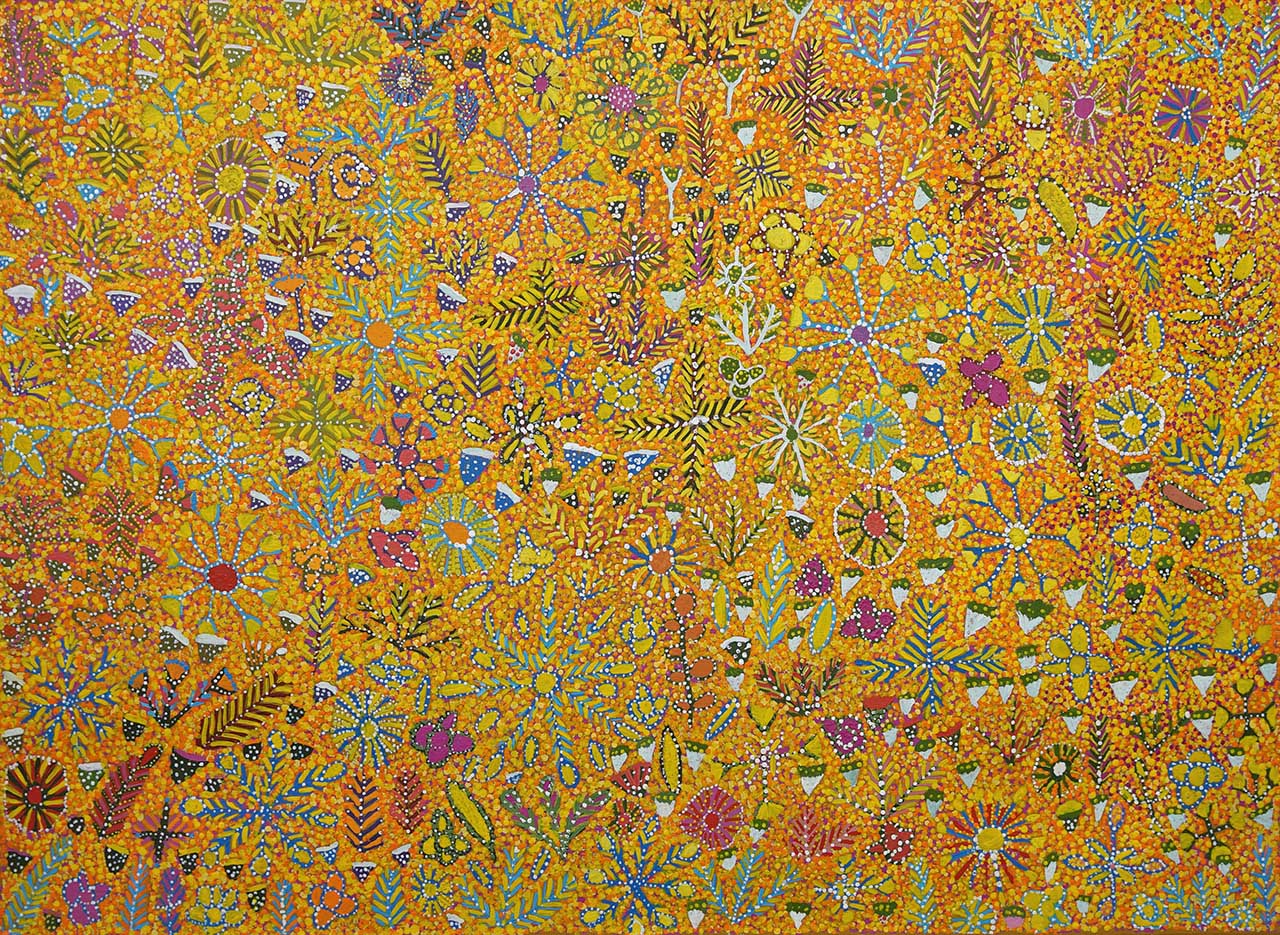
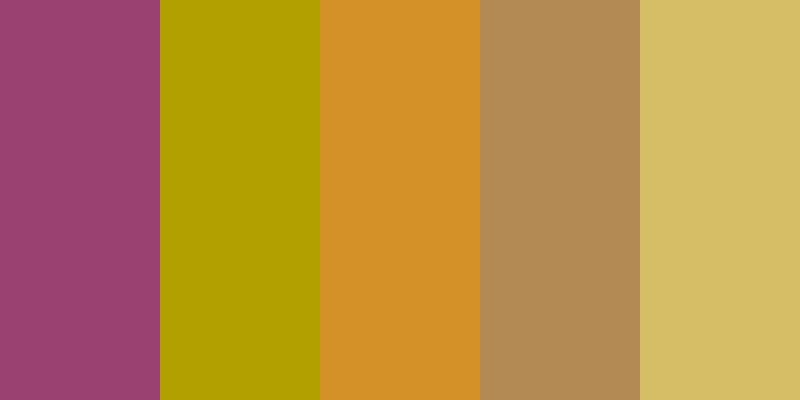
Margaret Kemarre Ross | Bush Flowers and Bush Medicine Plant
Margaret Kemarre Ross’s painting is more like a close-up, as though you were standing right in amongst attractive bush country. She has entitled it ‘Bush Flowers and Bush Medicine Plants’. The close focus of this view makes it feel very contemporary, so there’s no focus point, there’s no horizon. There’s no sense that it’s anything other than the expanse of the bush. It is completely filled with the Indigenous species of plants and bushes made alive with wildflowers and flowering bushes.
(Jap 014603)
View Margaret Kemarre Ross
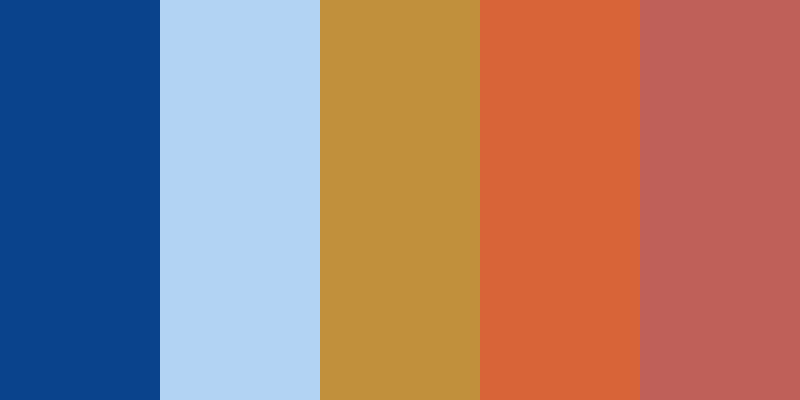
Betty Pula Morton | My Country and Bush Medicine
Sometimes landscapes that are painted in intense colours capture our imagination. Betty Paula Morton has created a sense of a pink and orange landscape with an intense blue sky and purple-red range of hills off in the background. The detail and the micro size of the plants is extraordinary in this painting. You see the warm colours of the earth, and then the extremely fine detail of the plants. They’re almost like people standing up in the landscape- proportioned like figures in the landscape. The whole landscape is populated by bush food and bush medicine plants.
(Jap 014602)
View Betty Pula Morton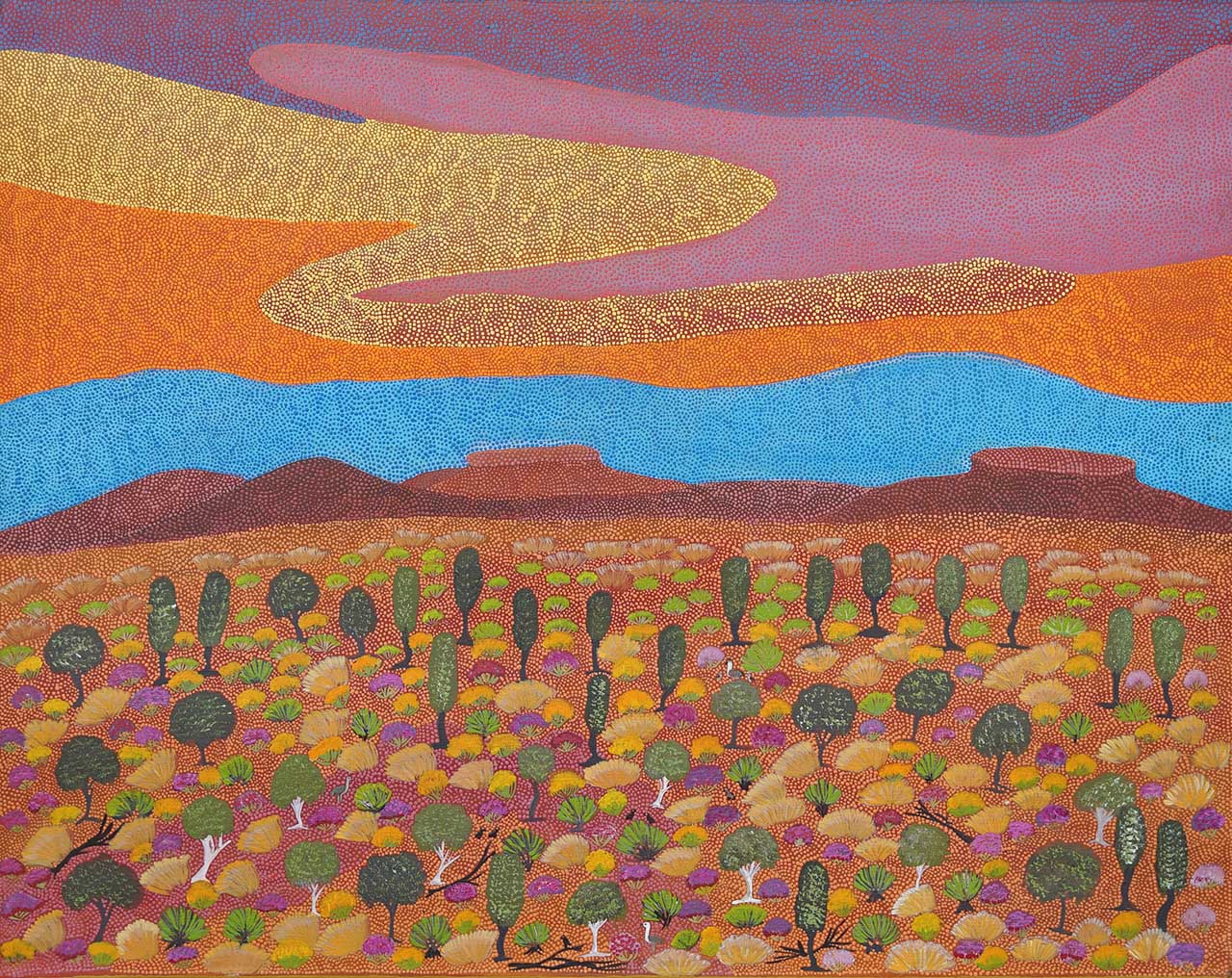
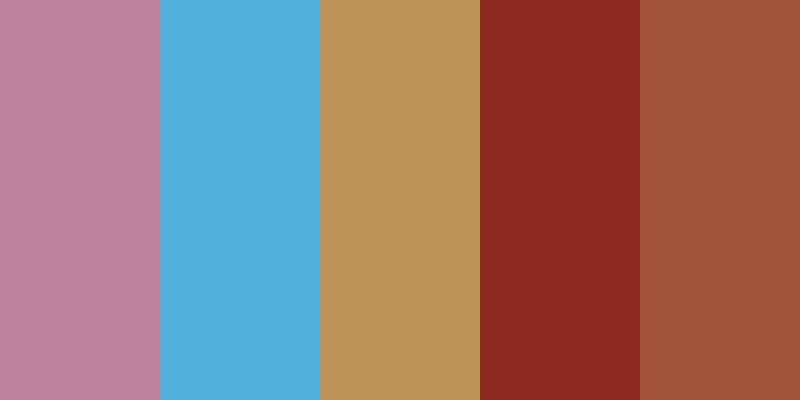
Kathleen Nanima Rambler | View Of Country
Kathleen Nanima Rambler’s painting uses the sky as the dominant design element. There are swirling bands of coloured clouds moving across the sky with flat-top ridges along the horizon. Down below, spinifex and small trees mark the country. This feels like it has a different focus to some of the other paintings where it’s not so much the bush medicine plants and the species of Indigenous bushes that can be used. It is more about the expansiveness of the country – the way the sky opens out over the country. Even the colours are reflected in the sky from the earth below. The purples, oranges and yellows leap up into the sky straight from the earth.
(Jap 014601)
View Kathleen Nanima Rambler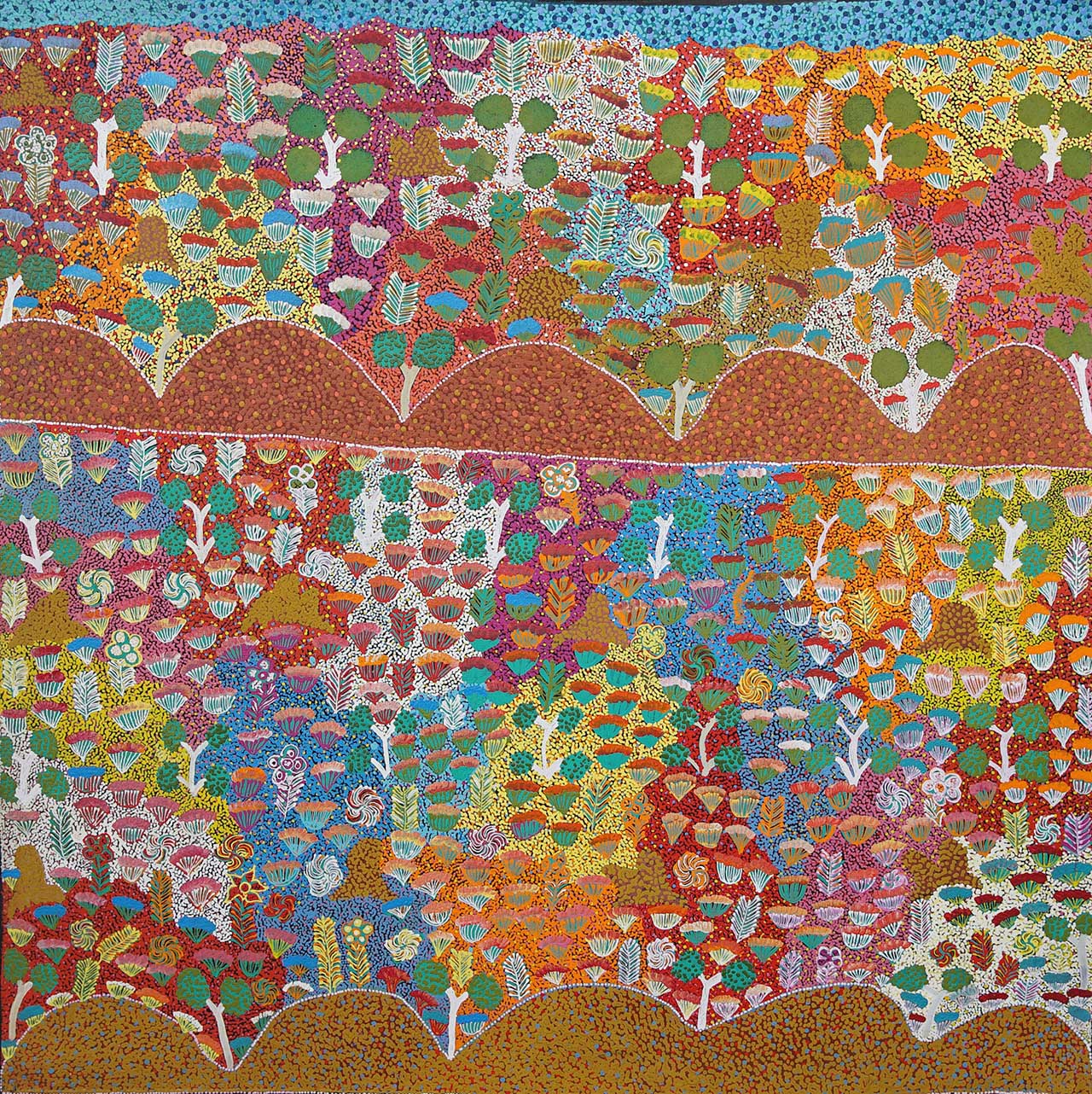
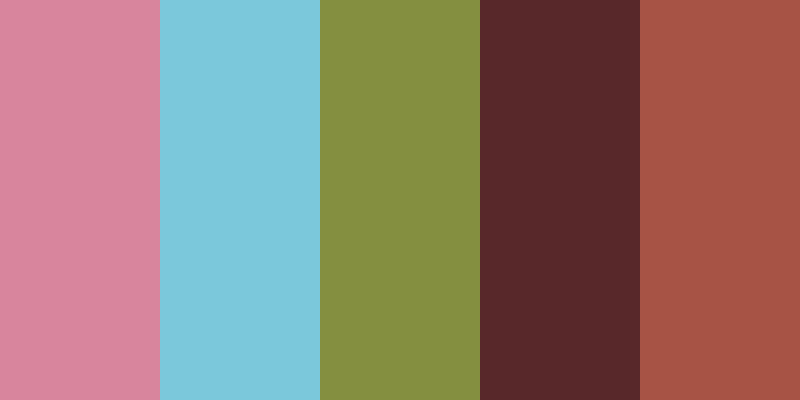
Joycie Pitjarra Morton | My Country
Joycie Pitjarra Morton’s painting is probably the most colourful and diverse painting from the exhibition by Ampilatwatja artists. It has pockets of country that are extraordinary in colour. They can vary from purples and reds, through blues, oranges and yellows. You see all the plant life over the top of the colour, all highly contrasting in each of the little areas of the bush. There’s that sense that the artist observes all the different kinds of the vegetation within the broad landscape, and the country is divided by the rocky section of hills that go right through the centre of the country.
(Jap 014599)
View Joycie Pitjarra Morton
